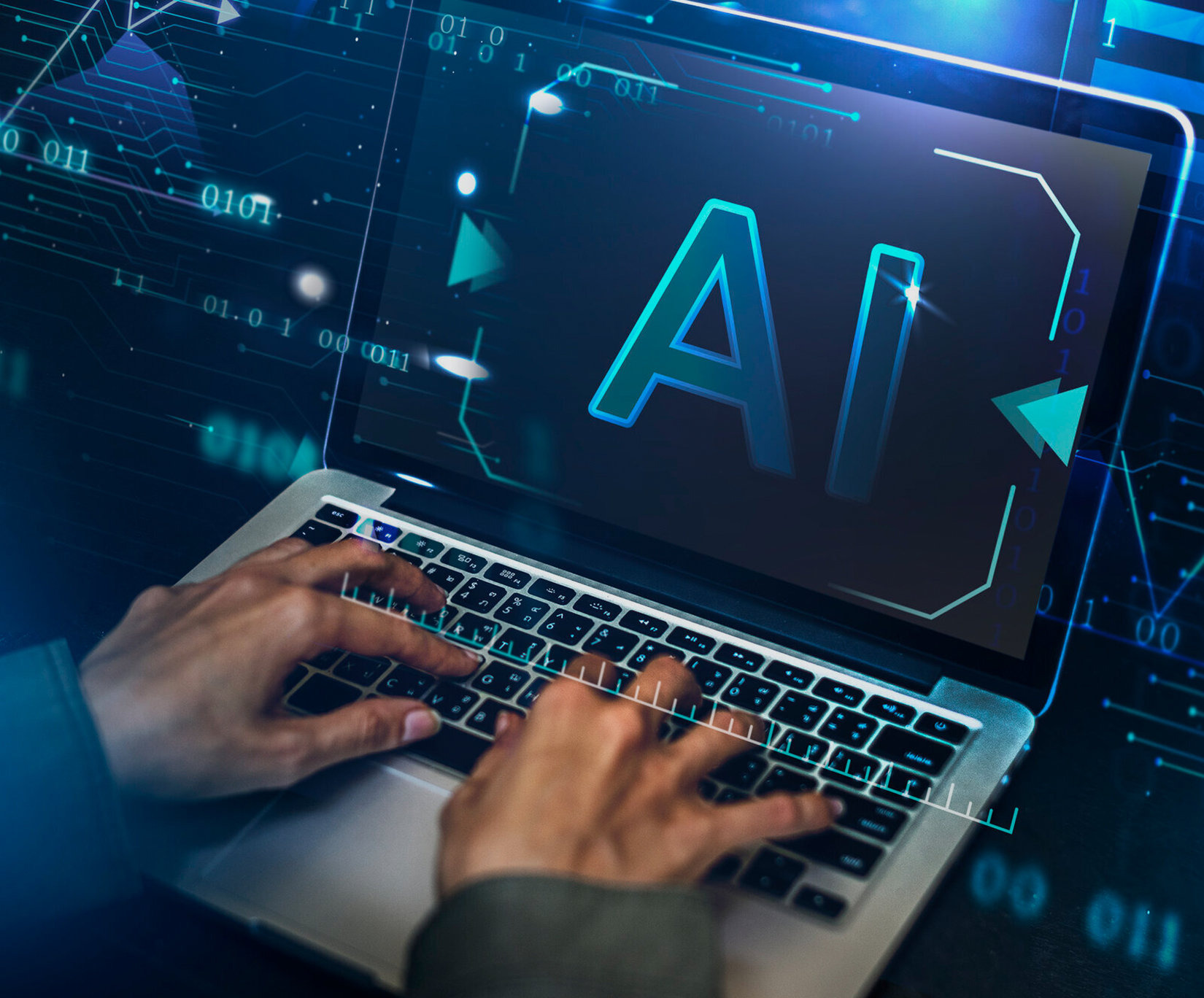AI-driven ad campaigns use sophisticated algorithms and machine learning technologies to automate, optimize, and personalize advertising efforts.
With data-driven insights to target specific audience segments with precision, artificial intelligence helps you reach the right people at the right time.
AI integration in advertising allows marketers to move beyond traditional methods, allowing more efficient ad spend, improved ad performance, and enhanced return on investment (ROI).

The Evolution of AI in Advertising
The AI journey in advertising started with basic automation tasks and is now evolved into complex decision-making processes. Initially, AI was used to automate repetitive tasks such as scheduling and posting ads.
Over time, the role of AI has expanded to include analyzing consumer data and behavior. That way, we make more informed decisions with AI-driven insights. And now, AI tools can predict future trends, allowing you to stay ahead in a competitive market.
Personalization at Scale
AI tools can now analyze individual user data to create tailored ads, ensuring each potential customer gets a unique and relevant message.
The concept level of personalization enhances user experience from the get go and increases the likelihood of conversion. When using AI, marketers can maintain a personal touch in our communications, even as we reach larger audiences.
Dynamic Creative Optimization
Dynamic Creative Optimization (DCO) is a next-level advancement in AI-driven ad campaigns. DCO uses machine learning to automatically assemble creative elements like headlines, images, and call-to-action buttons, creating the best possible ad for each viewer. The technology serves relevant and engaging ads, capturing the viewer’s attention more effectively. The result is a more efficient creative process and improved ad performance.
The Role of Machine Learning in Ad Optimization
Machine learning, a subset of AI, plays a pivotal role in ad optimization by continuously analyzing huge amounts of data to identify patterns and trends.
Machine learning algorithms can predict which ad creatives will perform best, determine optimal bidding strategies, and even automate the A/B testing process. As a result, AI-driven ad campaigns can achieve levels of precision and efficiency that were previously unimaginable.
Predictive Analytics for Future Planning
Examining historical data and identifying patterns, we use predictive analytics to forecast future purchasing decisions and preferences. This kind of foresight allows marketers to plan and execute campaigns proactively, rather than reactively, positioning our brands advantageously in the market.
Automating the A/B Testing Process
A/B testing is a crucial component of ad optimization, and machine learning can enhance this process. Multiple advertising platforms generate AI content based on your own, allowing you to A/B test all pieces simultaneously. Advertising platforms also use machine learning to identify when a campaign is being A/B tested, and once enough data is processed by the algorithm, the better performing piece is being pushed.
The Advantages of AI-Driven Ad Campaigns
Enhanced Targeting Capabilities
AI can identify and segment audiences based on a multitude of factors, including demographics, interests, online behavior, and purchase history by analyzing huge datasets. With such granular levels of targeting your ads are highly relevant to each audience segment, increasing the likelihood of engagement and conversion – something especially valuable in B2B PPC, where reaching decision-makers needs precision and data-driven insights.
Segmentation Beyond Demographics
AI allows marketers to move beyond basic demographic targeting, delving into psychographic and behavioral segmentation. By understanding users’ lifestyle choices, interests, and behaviors, marketers can craft messages that resonate on a deeper level. A nuanced segmentation increases the relevance and impact of campaigns, driving higher engagement rates.
Lookalike Audiences
AI can identify new potential customers who share similar traits with the power of analysis of existing customers’ characteristics. This approach not only broadens the audience but also ensures that new targets are highly likely to engage with the brand, improving conversion rates.
Creative Element Optimization
As explained in the A/B testing section, marketers can use AI to analyze the effectiveness of different creative elements. By testing various headlines, images, and call-to-actions, AI identifies the combination that yields the highest engagement and conversion rates. Such an ongoing optimization process ensures that campaigns remain fresh and effective.
Identifying Emerging Trends
Real-time analytics can identify emerging trends and consumer preferences. By staying ahead of these trends, marketers can tailor their campaigns to meet the evolving needs and interests of their audiences.
AI-Driven Ad Campaigns: Best Practices
To maximize the benefits of AI-driven ad campaigns, marketers must define clear objectives and key performance indicators (KPIs). Setting measurable goals ensures campaigns remain aligned with business strategies and deliver tangible results.
Setting Specific and Measurable Goals
Clear and measurable goals guide AI-driven campaigns while aligning them with overall business objectives. These goals should follow the SMART framework—specific, measurable, achievable, relevant, and time-bound—to provide clarity and trackable progress.
AI campaigns are most effective when closely tied to broader business goals. By maintaining this alignment, marketers can optimize resource allocation and direct AI efforts toward impactful outcomes.
Regularly Reviewing and Adjusting KPIs
Review KPIs regularly to adapt to changing market conditions or business priorities. This iterative approach ensures campaigns stay relevant and effective while driving continuous improvement.
Successful AI-driven ad campaigns hinge on the right tools and technologies. Marketers should prioritize platforms that offer the right AI capabilities, seamless integration with existing systems, and comprehensive analytics features.
Evaluating AI Platforms and Tools
When choosing AI platforms, evaluate their capabilities, compatibility, and scalability. Ensure the platform supports existing workflows and future growth needs to maximize return on investment.
Many PPC services now integrate AI-driven optimization tools, automating bid adjustments, audience targeting and ad placements to enhance campaign performance.
Effective AI campaigns require seamless integration with current marketing systems. This compatibility ensures smooth data flow and enables comprehensive analytics for actionable insights.
User-friendly platforms facilitate widespread adoption and efficient usage. Intuitive tools encourage marketers to leverage AI’s full potential without extensive technical expertise.
Foster a Culture of Continuous Learning
AI thrives in organizations that embrace learning, innovation, and adaptability. Staying informed about advancements in AI technology and digital marketing is crucial for maintaining a competitive edge.
Foster an environment where testing and experimentation are encouraged. This culture enables teams to unlock creative solutions, discover new opportunities, and drive progress.
Staying Updated with Industry Trends
Keep up with AI developments and digital marketing trends through webinars, conferences, and training sessions. Continuous learning equips teams with the knowledge needed to navigate a rapidly evolving landscape.
Building Cross-Functional Teams
Cross-functional collaboration enriches AI-driven campaigns by combining diverse perspectives and skill sets. This teamwork enhances problem-solving and aligns strategies across the consumer journey.
Conclusion
AI-driven ad campaigns offer unmatched opportunities for precision targeting, enhanced ad performance, and actionable insights. As AI continues to integrate with advanced technologies like AR, VR, and IoT, marketers can create immersive and personalized advertising experiences. However, success demands navigating ethical considerations and data privacy concerns responsibly.
By embracing best practices—defining clear goals, investing in the right technology, and fostering continuous learning—marketers can unlock the transformative potential of AI in digital advertising. The future belongs to those who adapt, innovate, and apply AI to meet the dynamic needs of the modern consumer.




